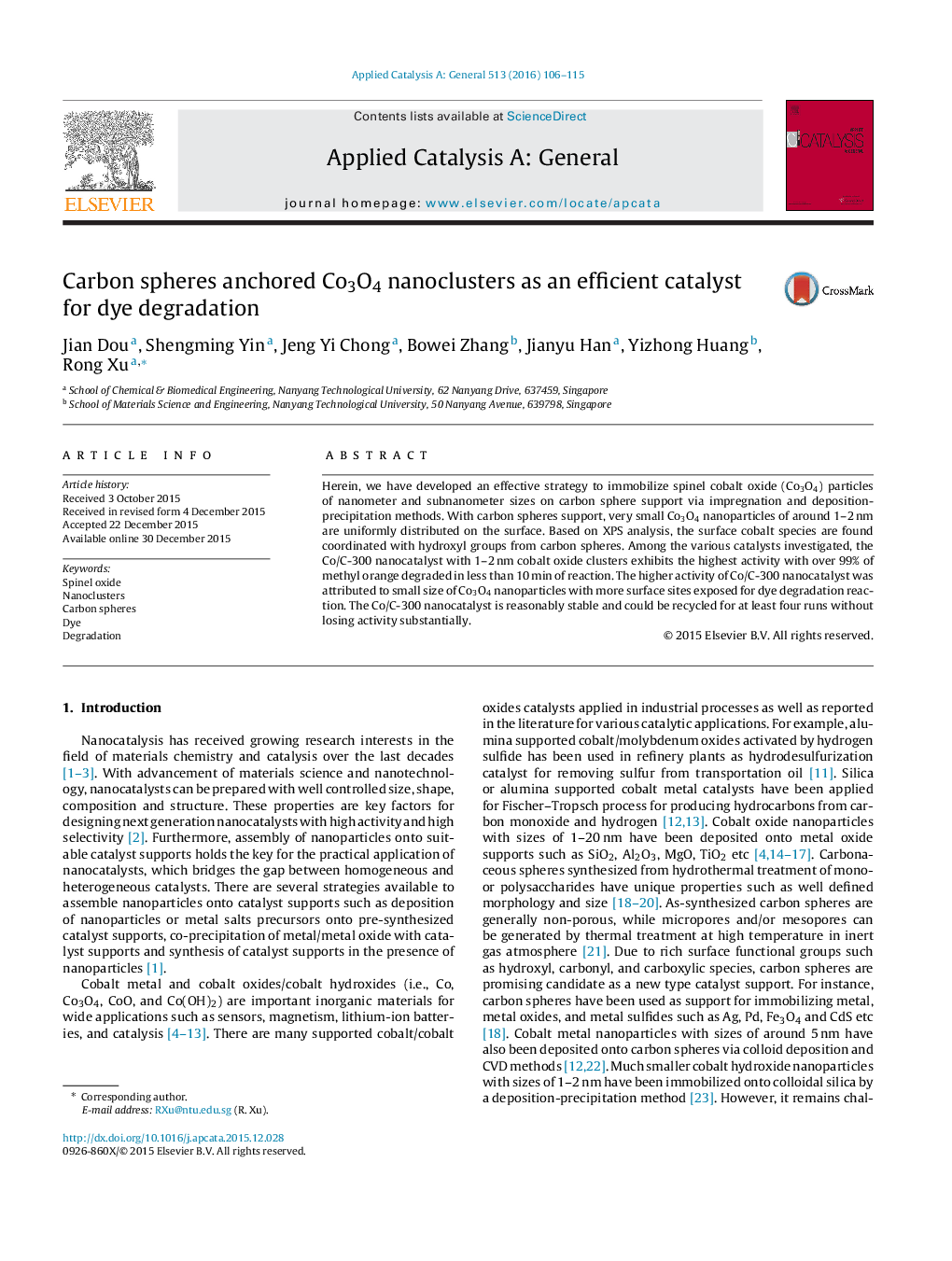| Article ID | Journal | Published Year | Pages | File Type |
|---|---|---|---|---|
| 38850 | Applied Catalysis A: General | 2016 | 10 Pages |
•Cobalt oxide nanoparticles with sizes of 1–2 nm are immobilized on carbon spheres support.•Cobalt nanoclusters are stabilized via coordination with surface functional groups of carbon spheres.•Co/C catalyst with 1–2 nm of cobalt oxide nanoclusters is very active for dye degradation, with its activity 8 times as high as that of 5–10 nm Co3O4/MgO catalyst.
Herein, we have developed an effective strategy to immobilize spinel cobalt oxide (Co3O4) particles of nanometer and subnanometer sizes on carbon sphere support via impregnation and deposition-precipitation methods. With carbon spheres support, very small Co3O4 nanoparticles of around 1–2 nm are uniformly distributed on the surface. Based on XPS analysis, the surface cobalt species are found coordinated with hydroxyl groups from carbon spheres. Among the various catalysts investigated, the Co/C-300 nanocatalyst with 1–2 nm cobalt oxide clusters exhibits the highest activity with over 99% of methyl orange degraded in less than 10 min of reaction. The higher activity of Co/C-300 nanocatalyst was attributed to small size of Co3O4 nanoparticles with more surface sites exposed for dye degradation reaction. The Co/C-300 nanocatalyst is reasonably stable and could be recycled for at least four runs without losing activity substantially.
Graphical abstractCobalt oxide nanoparticles with sizes of 1–2 nm were immobilized on carbon spheres support. Surface cobalt species were stabilized via coordination with surface hydroxyl groups of carbon spheres. Small cobalt oxide nanoclusters were very active for oxidative dye degradation.Figure optionsDownload full-size imageDownload high-quality image (115 K)Download as PowerPoint slide
